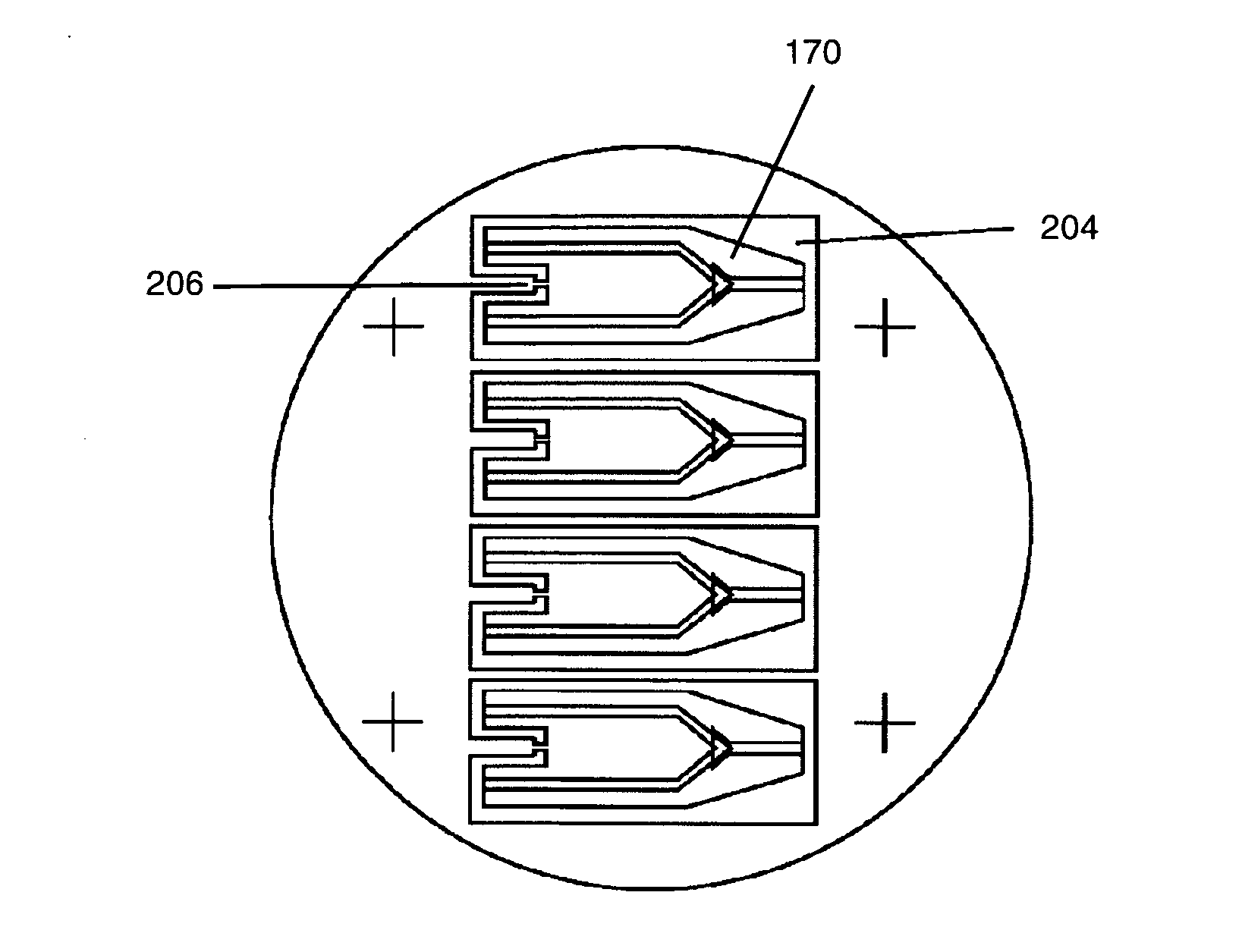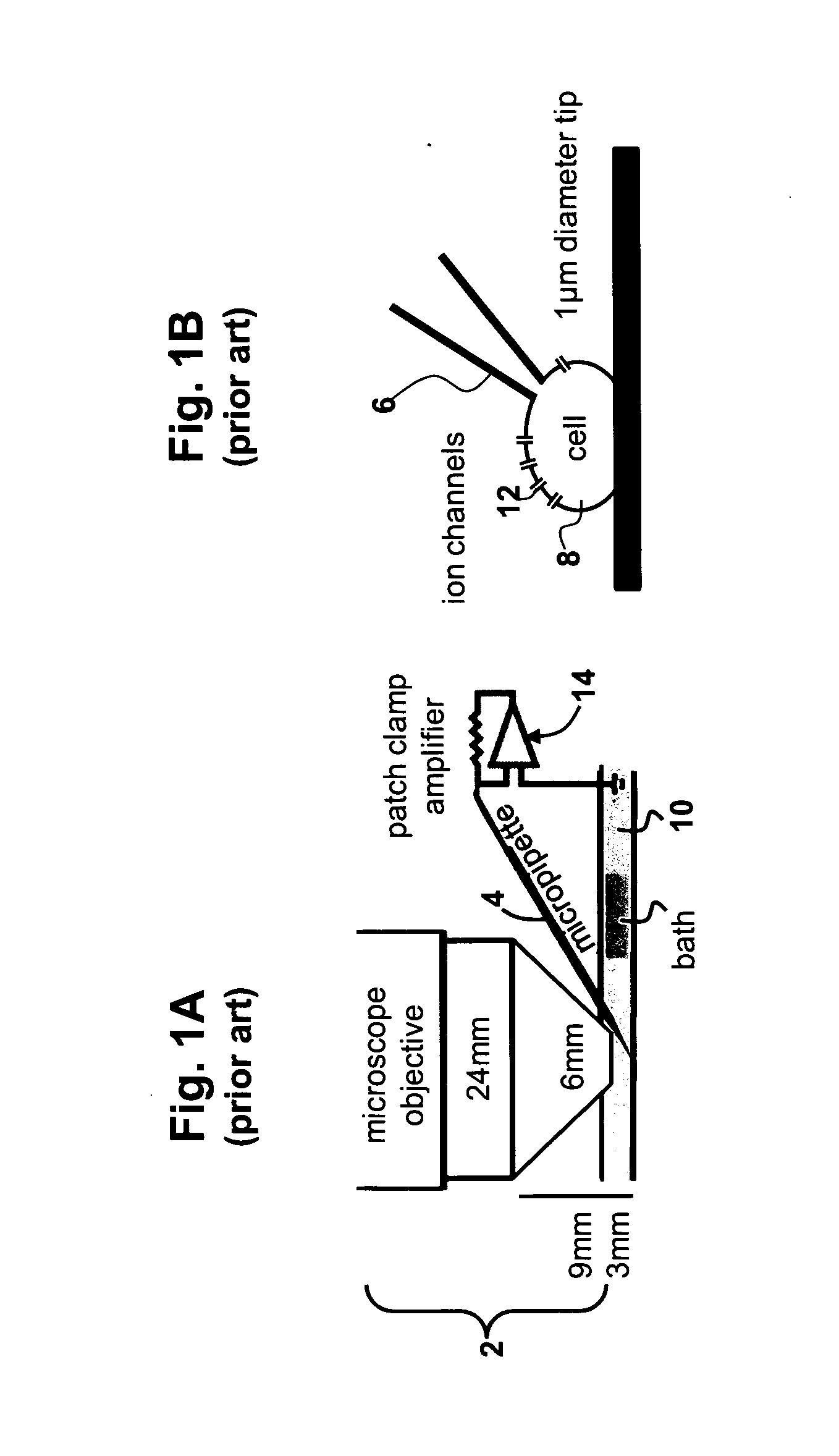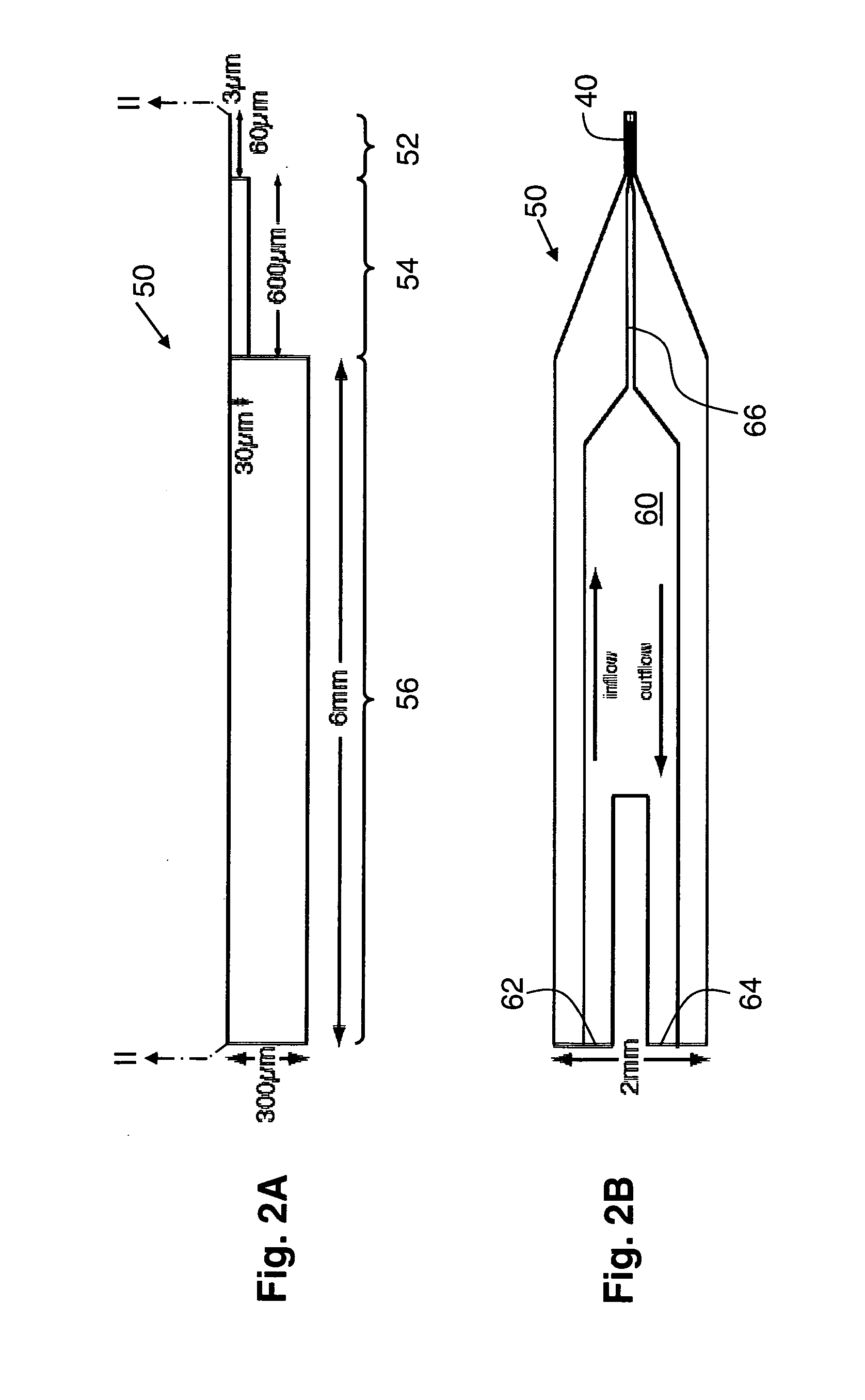Microfabricated pipette and method of manufacture
- Summary
- Abstract
- Description
- Claims
- Application Information
AI Technical Summary
Benefits of technology
Problems solved by technology
Method used
Image
Examples
Embodiment Construction
[0039]FIGS. 2A-2B depict a microfabricated pipette 50 in accordance with an aspect of the invention. Microfabricated pipette 50 includes tip portion 52, neck portion 54, and body portion 56. For clarity of illustration of the internal structure of microfabricated pipette 50, including pipette internal cavity 60, FIG. 2B is depicted in top cross-sectional view. The various dimensions shown in the drawings included herewith, including FIGS. 2A and 2B, are representative of preferred embodiments, but may be adjusted to accommodate particular applications. Cavity 60 includes inlet port 62 and outlet port 64, through which fluid may be introduced and extracted. Cavity 60 is generally U-shaped, and fluidically communicates at its bottom with pipette end 40 through neck channel 66. Thus, an external fluid may be introduced and dialyzed with a cell patch-clamped using microfabricated pipette 50.
[0040]An alternative construction of a microfabricated pipette 70 having functionality similar to...
PUM
| Property | Measurement | Unit |
|---|---|---|
| Length | aaaaa | aaaaa |
| Length | aaaaa | aaaaa |
| Length | aaaaa | aaaaa |
Abstract
Description
Claims
Application Information
 Login to View More
Login to View More - R&D
- Intellectual Property
- Life Sciences
- Materials
- Tech Scout
- Unparalleled Data Quality
- Higher Quality Content
- 60% Fewer Hallucinations
Browse by: Latest US Patents, China's latest patents, Technical Efficacy Thesaurus, Application Domain, Technology Topic, Popular Technical Reports.
© 2025 PatSnap. All rights reserved.Legal|Privacy policy|Modern Slavery Act Transparency Statement|Sitemap|About US| Contact US: help@patsnap.com



